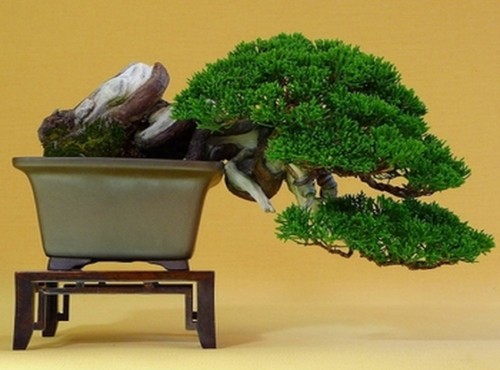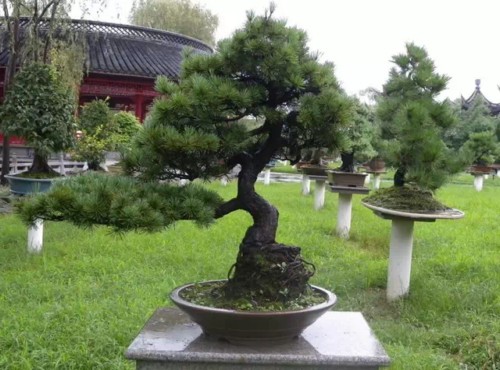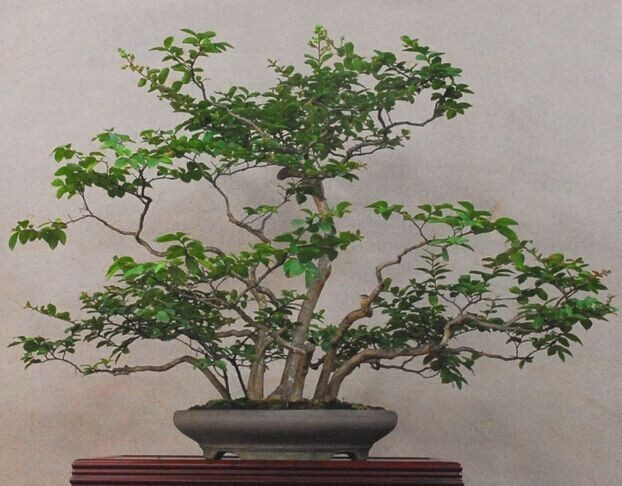Notes on Fertilization of Pine Bonsai
A few days after the application of organic fertilizer, it is often seen that the fertilizer grows white hyphae, and most of them think that the fertilizer is not completely mature. After the raw material is mature, it will turn into powder, for some factors (it may be bagging, easy to use, beautiful … In this process, adhesive objects (such as starch, plant gum, etc.) are added, mixed and mixed with water to form a fluid, which is convenient to be molded by machine, and finally dried and sterilized at high temperature. before bagging, storing and selling.

After we apply it, the water content of fertilizer increases, and there is food in it. after contact with microbes in the air and soil, microorganisms multiply in large numbers, resulting in a lot of hyphae that can be seen by the naked eye. Will this phenomenon harm plants? As long as the thickness of the fertilizer is not too thick, so that the temperature will not rise sharply, it will not affect. Instead, this process accelerates the disintegration of fertilizers, allowing fertilizer and organic matter to enter the soil for plants to absorb.
If you sprinkle organic fertilizer directly on the soil surface, the water is easy to evaporate, microorganisms are easy to be killed by ultraviolet rays, the fertilizer disintegrates slowly, plants absorb slowly, and some insects will be attracted. Therefore, we can slightly open the soil, fertilize the soil and then cover it back, allowing microorganisms to multiply in large numbers, quickly decompose the sticky substances that are added later, speed up the disintegration of organic fertilizer, and are less likely to attract insects (spreading germs and viruses).
Nitrogen deficiency: the plant is short, the leaves of the whole plant are light green, the old leaves are withered and yellow. Too much: the plant growth is too exuberant, the leaf color is thick green, the leaf is big and weak. Easily infected by diseases and insect pests.
Phosphorus deficiency: the growth of the plant is blocked, the width of the leaves becomes narrower, the leaves are smaller, the leaves are dark green and dull, and some crops appear purple in the old leaves and stems. Too much: the plant becomes shorter, the leaves become thicker, and the growth becomes bad.
Potassium deficiency: the growth was blocked, the contents of water-soluble carbohydrates and soluble nitrogen increased, while the contents of protein and starch decreased, the leaf edge of the old leaf yellowed, the mesophyll of the leaf margin showed scorched brown spots, the plant was weak, it was easy to wither when lack of water, and the new leaves turned dark green. Elongation inhibition becomes leaflet, root elongation is not good, easy to rot.
Although pine is a foliage plant, it does not need a large amount of nitrogen fertilizer. after all, the requirement of potted plants is the balance between roots, stems, branches and leaves. If the nitrogen fertilizer is too high, it is easy to cause overgrowth, leaves, internodes and weak plants. on the whole, it is very ugly (especially the finished tree), and the pine fungus is a non-leguminous nitrogen-fixing symbiotic bacteria without nitrogen fertilizer. Pine fungi can also convert nitrogen from the air into nitrogen fertilizer that can be absorbed by plants (it is not known whether pine fungi have the characteristics of phosphorus-solubilizing bacteria) too much: lead to calcium and magnesium deficiency.
Because most of us use organic fertilizers, there will be no shortage of minor elements (Ca, Mg, S) and trace elements needed by other plants. More attention should be paid to the content of organic matter. Part of the organic matter is humic acid.
Humic acid is classified as fertilizer, but its main function is not to supply "pure growth" elements, but it has a special function of irrigation, especially for roots.
Time: 2019-06-12 Click:
- Prev

Fertilization skills of Pine Bonsai in Spring and Autumn
In the wild, most pine trees grow in poor ridges or high altitude areas, and are pioneer species of positive (good sunlight), which means that pine trees can grow well without using too much fertilizer. Horticultural cultivation in order to enable trees to grow quickly and shorten the cultivation time, fertilizer is still applied.
- Next

The method of pruning and shaping of crape myrtle bonsai
Crape myrtle is resistant to pruning, strong branching ability and large shoot growth. Therefore, the residual flowers should be cut off after flowering, which can prolong the flowering period and cut off the overgrown branches, overlapping branches, crossed branches, radiant branches and diseased branches at any time so as not to consume nutrients. Pruning and shaping: 1. Pruning and shaping of general crape myrtle bonsai
Related
- Fuxing push coffee new agricultural production and marketing class: lack of small-scale processing plants
- Jujube rice field leisure farm deep ploughing Yilan for five years to create a space for organic food and play
- Nongyu Farm-A trial of organic papaya for brave women with advanced technology
- Four points for attention in the prevention and control of diseases and insect pests of edible fungi
- How to add nutrient solution to Edible Fungi
- Is there any good way to control edible fungus mites?
- Open Inoculation Technology of Edible Fungi
- Is there any clever way to use fertilizer for edible fungus in winter?
- What agents are used to kill the pathogens of edible fungi in the mushroom shed?
- Rapid drying of Edible Fungi

